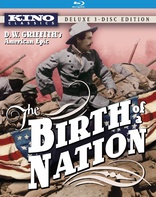The Birth of a Nation Blu-ray Movie
HomeThe Birth of a Nation Blu-ray Movie 
Special Edition / Blu-ray + DVDKino Lorber | 1915 | 193 min | Not rated | Nov 22, 2011
Movie rating
6.7 | / 10 |
Blu-ray rating
| Users | 4.4 | |
| Reviewer | 4.5 | |
| Overall | 4.4 |
Overview
The Birth of a Nation (1915)
Nearly 100 years after its initial release, The Birth of a Nation remains one of the most controversial films ever made and a landmark achievement in film history that continues to fascinate and enrage audiences. It is the epic story of two families, one northern and one southern, during and after the Civil War. D. W. Griffith's masterful direction combines brilliant battle scenes and tender romance with a vicious portrayal of African-Americans. It was the greatest feature-length blockbuster yet to be produced in the United States and the first to be shown in the White House. After seeing it, President Woodrow Wilson remarked it was "like writing history with lightning!"
Starring: Lillian Gish, Mae Marsh, Henry B. Walthall, Miriam Cooper, Mary AldenDirector: D.W. Griffith
| Drama | Uncertain |
| War | Uncertain |
| History | Uncertain |
| Epic | Uncertain |
Specifications
Video
Video codec: MPEG-4 AVC
Video resolution: 1080p
Aspect ratio: 1.34:1
Original aspect ratio: 1.33:1
Audio
Music: DTS-HD Master Audio 5.1
Music: LPCM 2.0
Subtitles
None
Discs
50GB Blu-ray Disc
Three-disc set (1 BD, 2 DVDs)
DVD copy
Playback
Region free
Review
Rating summary
| Movie | 4.5 | |
| Video | 4.0 | |
| Audio | 4.0 | |
| Extras | 3.5 | |
| Overall | 4.5 |
The Birth of a Nation Blu-ray Movie Review
The birth of American feature films and the rebirth of the KKK.
Reviewed by Casey Broadwater November 30, 2011D.W. Griffith’s The Birth of a Nation—a 1915 silent about the Civil War and the Reconstruction of the South—is a clear case of one step
forward and two steps backward. It is, without question, one of the highest landmarks on the map of American cinema. It advanced the art of
narrative filmmaking with innovative new camera techniques and had the audacity for an epic three-hour runtime when most silent movies of the era
were short one-, two-, or three-reelers. It was also the first honest-to-goodness blockbuster, a massive commercial success that warranted a $2 ticket
price when the average theater admission was around 15 cents. (To put that in perspective, one ticket—adjusted for inflation—would cost over $40
today.) The Birth of a Nation was, for all intents, the birth of the Hollywood feature film.
But then, of course, there’s the issue of the movie’s cringe-inducing, unapologetically racist ideology. Actually, unapologetically is perhaps the
wrong word, as the film is an apology in the more formal sense—it justifies racism by portraying blacks as ignorant, lazy, and sexually
malevolent, and it defends the actions of the nascent Ku Klux Klan, who are championed as the saviors of the South, protectors of women and
“oppressed” whites. Used as a recruitment tool, The Birth of a Nation played no small role in the 1915 renaissance of the KKK. Most of the
iconography of the modern movement—the white hoods, the burning crosses—was even taken directly from the film.
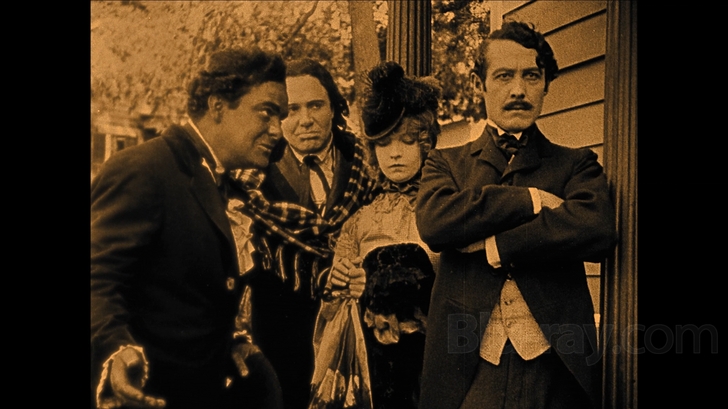
So, how are we to view The Birth of a Nation today, nearly one hundred years after its release? Ideally, with some ability to separate ground-breaking form from socially regressive content. In terms of filmmaking technique, Griffith was definitely pushing the envelope, using early tracking shots, iris effects, and close-ups, and even filming certain battle scenes at night, with the aid of enormous floodlights. More influential was the way he cut between parallel action occurring in separate locations, concurrently telling two distinct stories without audience confusion.
In terms of ideology, however, the film is and always was woefully outdated. The film purports to be a loosely fictionalized record of the injustices done to whites in the South—President Woodrow Wilson reportedly compared the movie to “writing history with lightning”—but it’s better seen as a document of the historical revisionism that came out of early 20th century racial attitudes and lingering resentments over Reconstruction. That said, even if sections of the film seem shamefully backward now—and there are scenes that are staggeringly racist by today’s standards—The Birth of a Nation does give us a sense of what race relations were like in the 1910s. It’s important to note that while the film was an unparalleled box office success—from which we can infer that many viewers probably agreed with its sentiments—it was controversially received even in its own time, causing riots, protests by the newly founded NAACP, and censorship or outright banning in several states.
The two-part film is structured in mirrored sets of oppositions—whites versus blacks, the federalist North versus the confederate South, and pastoral pre-war life versus antebellum tension and fear. In the first part, we’re introduced to the families of two disparate patriarchs, northern abolitionist congressman Austin Stoneman (Ralph Lewis), and Dr. Cameron (Spottiswoode Aitken), a genteel slave-owning southerner. The two clans are linked by friendship, as the sons of both fathers went to boarding school together. Love is also in the air, and when the Stoneman boys head down south to visit their old pals, the eldest falls for the winsome Margaret Cameron (Miriam Cooper), while Ben Cameron (Henry B. Walthall) pines over a photograph of Elsie Stoneman (Lillian Gish), whom he’s never met. The outbreak of war interrupts the frivolity, however, and the sons go off to fight for their respective sides.
D.W. Griffith had previously made several Civil War-themed shorts—seven of which are included in this set—but none as large in scope as the explosive action he orchestrated in Birth of a Nation, utilizing hundreds of extras and relying on military experts from West Point to make the battle scenes as authentic as possible. These sequences are still impressive—particularly the charge led by Ben, who comes to be known as the “Little Colonel”—and in their heightened realism you can see how The Birth of a Nation, one of the first of its kind, went on to influence the conventions and staging of the war movie genre. Just as striking is Griffith’s haunting recreation of John Wilkes Booth’s assassination of Abraham Lincoln, played here with sunken cheeks and hollow eyes by Joseph Henebery. It’s not particularly graphic, but it’s genuinely disturbing to see Lincoln slump down in his chair after the fateful shot is fired.
The most disturbing sections of Birth of a Nation, however, fall in part two, in which Griffith tells the story of Reconstruction from the bunk perspective of the poor, subjugated southern whites who supposedly suffered under the heels of empowered freed slaves and the northern carpetbaggers who ventured below the Mason Dixon Line in search of profit or power. One such carpetbagger is Silas Lynch (George Siegmann), Austin Stoneman’s mulatto protégé, who becomes Lieutenant Governor of South Carolina, leading a legislature newly composed of black freemen who—as one intertitle puts it—“knew none of the uses of authority, except its insolences.” In the state senate chambers, the black officials are shown at their disorganized desks, eating chicken, drinking liquor, and leering lasciviously at the white women who come to view the proceedings. It’s hard to imagine a more offensive portrayal, but Griffith tops even this caricature with the character of Gus—played by Walter Long in blackface— a “renegade Negro” who pursues Flora Cameron (Mae Marsh) through the woods with clearly sexualized menace. Gus is captured, tried, and summarily killed by the KKK, which—in the film’s version of history—is founded when Ben Cameron takes inspiration from white children who put ghost-like sheets over their heads to scare off black tormentors. Later, when rabblerousing blacks under Lynch’s command take over the town and close in on the Cameron family—hiding in a remote farmhouse—the Klansmen ride in gallantly to save the day, white knights on horseback. We can be grateful, at the very least, that this was the last time they would be outright celebrated in the cinema.
The Birth of a Nation Blu-ray Movie, Video Quality 
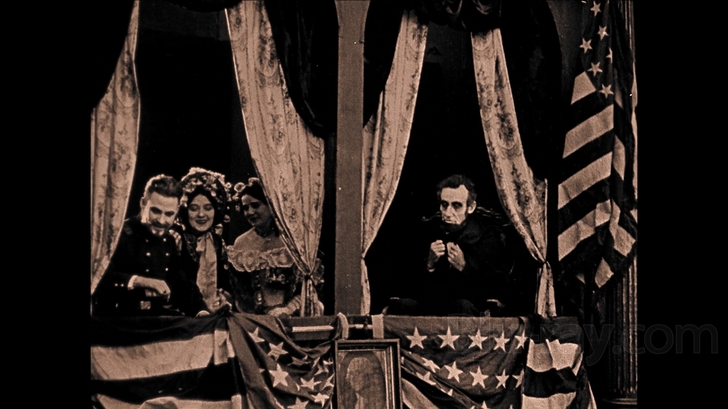
I've seen Kino's 1993 restoration of Birth of a Nation on DVD, and a few months ago I watched the film streaming on Hulu+, and compared to both this new Blu-ray edition is a revelation. This is the earliest silent movie Kino has yet released in high definition, and it's a prime example of how wonderful these films can now look on home video. As usual, Kino's approach is to do only what is absolutely necessary to optimize the picture. Film grain is kept intact—no smeary DNR here—and the image is free of edge enhancement or other kinds of overly unnatural boosting. The picture has been digitally tinted, but this is to bring the film back to Griffith's original specifications. (Sometimes the tinting does look a bit too bright or saturated to me, but I'm no expert on what the film looked like in 1915, so I'll default to Kino.) Clarity is remarkably improved from the DVD—which is also included in this set—as everything looks more defined and resolved. The tonal dynamics are strong too, with deep blacks and a usually balanced sense of contrast. (Highlights can look a bit blown out in certain scenes.) Of course, the picture does display the expected levels of age-related wear and tear—scratches, specks, judder, and minor warping—but if you watch many silent films you're already used to this. Overall, this transfer makes for a notable advance, and film collectors should have no qualms about upgrading to the Blu-ray.
The Birth of a Nation Blu-ray Movie, Audio Quality 
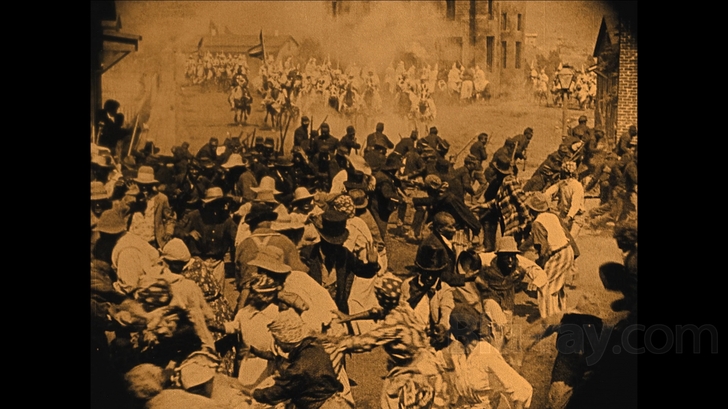
The Birth of a Nation features two audio options on Blu-ray, DTS-HD Master Audio 5.1 and Linear PCM 2.0 versions of the film's original score, as performed in 2011 by the Mont Alto Motion Picture Orchestra. Both the surround and stereo mixes sound great, with defined instrumentation and a wide dynamic breadth. As you'd hope, the music is complementary rather than overpowering—it suits the film perfectly. The option of a few additional interpretations of the score would've been nice, but I have no real complaints.
The Birth of a Nation Blu-ray Movie, Special Features and Extras 
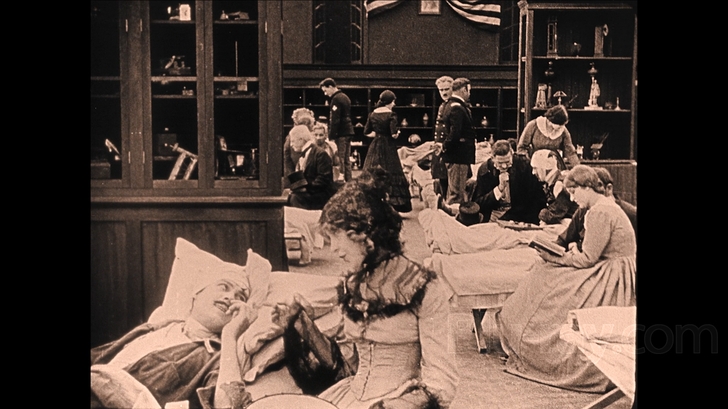
There are no bonus features on the Blu-ray itself, but the set includes two additional DVDs, one with the 1993 restoration of Birth of a Nation, and the second loaded with supplements, including:
- The Making of Birth of a Nation (SD, 24:00): A rather dry but informative visual essay about the film's production. Includes rare costume tests and other behind-the-scenes footage.
- 1930 Prelude to The Birth of a Nation (SD, 5:54): Mr. D.W. Griffith and his friend Mr. Walter Huston chain smoke cigarettes and discuss the origins of the film in this staged interview.
- D.W. Griffith's Civil War Films (SD): A collection of seven of Griffith's Civil War-themed shorts, which he made leading up to Birth of a Nation. Includes In the Border States (16 min.), The House with Closed Shutters (17 min.), The Fugitive (17 min.), His Trust (14 min.), His Trust Fulfilled (11 min.), Words and Hearts (16 min.), and The Battle (17 min.).
- New York vs. The Birth of a Nation: A gallery of scanned documents relating to the film's release and subsequent controversy.
- Posters, Ads, and Souvenir Programs Gallery
- Excerpts from the Novel: Includes illustrations, sample chapters, and the author's preface.
- Griffith Discusses the Film (Photoplay Magazine): An extensive piece that originally appeared in Photoplay Magazine in 1916. Well worth reading.
The Birth of a Nation Blu-ray Movie, Overall Score and Recommendation 
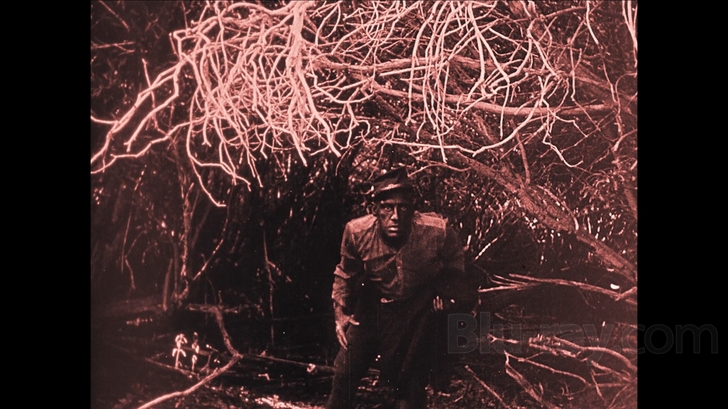
The Birth of a Nation is not a film to watch lightly, but one to study and discuss, as an example of both innovative feature-length storytelling and the complicated racial attitudes that arose out of the country's damaged psyche after the Civil War. Ultimately, all we can really do is recognize the film for what it is—a technical masterpiece marred by a morally bankrupt ideology. Kino's Blu-ray release is a must-own for all serious students of early American cinema. Highly recommended.
Other editions
The Birth of a Nation: Other Editions
Similar titles
Similar titles you might also like

Intolerance
Intolerance / The Mother and the Law / The Fall of Babylon
1916

Roots: The Complete Original Series
1977

Battle for Incheon: Operation Chromite
Operation Chromite / In-cheon sang-ryuk jak-jeon
2016

Abraham Lincoln
1930

Ride with the Devil
Director's Cut
1999

Overlord
1975

The Red and the White
Csillagosok, katonák
1967

Nomad: The Warrior
2005

Roots: The Next Generations - Complete Mini-Series
1979

Henry V
1944

Battleship Potemkin
Броненосец Потёмкин / Bronenosets Potyomkin
1925

Macbeth
Special Edition
1948

Cleopatra
1934

Richard III
1955

Glory 4K
1989

Selma
2014

Joan of Arc
1948

Generation War
Unsere Mütter, unsere Väter
2013

Breaker Morant
1980

Chimes at Midnight
1965
